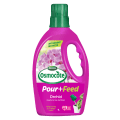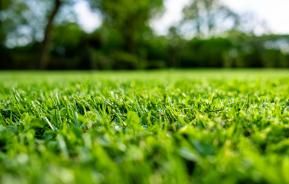Maintaining a glorious garden brimming with scented flowers and vibrant foliage is easy - just give plants what they want:
- Water
- Sunlight/Shade
- Nourishment
You’ve already chosen their positions and you know how to wield a hose, but how do you make sure they have all the nutrients they need to develop strong roots, masses of flowers and lush foliage?
By using fertilisers, of course!
Let’s take a look at what you need to know to select the right fertiliser for your garden, including:
- Types of fertiliser for plants
- Understanding fertiliser ratios
- What to use and when
- The importance of pH
What you need to know about fertiliser types
The type of fertiliser you choose will have a huge impact on the health of your garden. There are lots of options available, and choosing the right one at the outset can save you time and money in the long term.
Types of fertiliser
The most common types available:
- Organic based - either certified 100% organic or including organic matter.
- Composts and soil improvers.
- 'Instant hit' powder, granular and liquid fertilisers.
- Slow-release fertilisers.
- Controlled release fertilisers.
Understanding fertiliser ratios
Fertilisers are combinations of essential elements (nutrients) that have been mixed at specific ratios to encourage plants to grow, flower or fruit.
- Fertiliser manufacturers list these ratios on the packets, usually shown as N:P:K or Nitrogen (N), Phosphorus (P) and Potassium (K). These are the macro or major chemical elements that directly impact plant growth and development.
- Plants also require micro nutrients and trace elements to maintain optimal health.
Most fertiliser packaging will list major, minor and trace elements included and their relevant percentages or parts per million.
The importance of pH
- The pH of your soil determines the availability of some nutrients
- Test your pH every three to four years and adjust accordingly
- pH should be between 5.5 and 6.5 for most flowering trees and shrubs.
What fertiliser and when
Different fertilisers are required at different stages of plants' lifecycles. Whether it's establishing a new tree or encouraging more flowers and fruit, there's a fertiliser to suit each stage of growth and development
Plant type
Young and newly planted trees
What: Use a high nitrogen fertiliser to help develop strong growth.
Note: Additional applications of sheep pellets will also be of benefit.
Acid-lovers like gardenias, camellias, azaleas and roses.
What: Use a fertiliser like Scotts Osmocote Plus Trace Elements for Roses, Gardenias, Azaleas & Camelllias which has been specifically designed to give acid-loving plants the nutrients they need to flourish.
Note: Use a controlled release fertiliser to ensure the right nutrients are available when required.
Flowering plants
What: To encourage flowering, most plants benefit from a fertiliser high in phosphorus. This is best applied as needed in spring and summer.
Note: Use an all-purpose controlled release fertiliser twice a year, and apply liquid feeds throughout spring and summer for maximum wow!
Dormant (deciduous) trees and shrubs
What: Do not fertilise them while they are devoid of leaves!
Note: Wait until the first signs of new leaves and flowers appear in spring before fertilising.
Additional fertilising
What: Scotts Performance Naturals™ All Purpose Fertiliser will improve plant health as well as pest and disease resistance.
Note: Liquid fertilisers help to give plants an instant boost as they contain a mix of macro, micro and trace elements.










